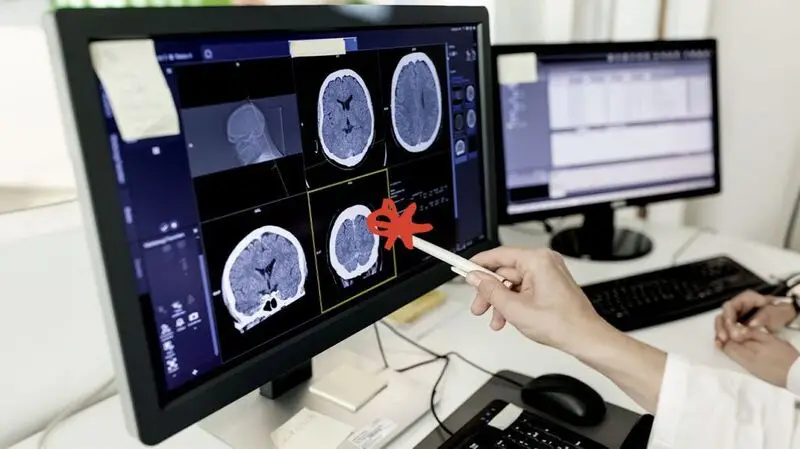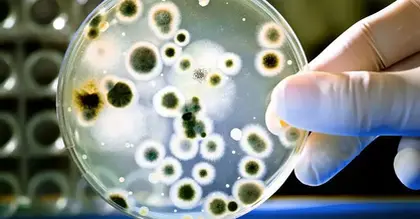
- Alzheimer’s disease is the most common form of dementia.
- The precise causes of the condition are still being fleshed out.
- For many years, scientists have concentrated on the role of proteins, but this focus is shifting.
- A new study concludes that lipid droplets in specific brain cells may be critical.
Characterized by neurodegeneration and a progressive loss of thinking skills, Alzheimer’s disease still holds many mysteries.
Globally, 55 million people are affected by dementia and by 2050 experts expect this figure to be 139 million.
Despite years of research, the precise mechanisms has been elusive.
A recent study, however, adds another piece to the puzzle.
For the past few decades, scientists have focused on protein build-up in neurons as the lynchpin of Alzheimer’s. So-called plaques and tangles coalesce in neurons and these hallmarks are linked to brain cell death.
Scientists recently designed drugs to clear these proteins, but they are
More recently, the focus has shifted toward the role of lipid droplets in brain cells.
A new
The gene most strongly correlated with risk is the APOE gene. There are various forms of this gene and the one that carries the
APOE is involved in lipid processing and in people with Alzheimer’s, the gene’s activity is
The increased activity by APOE causes lipid droplets to build up within the cells. However, to date, it has been unclear whether this buildup is protective, benign, or harmful.
To investigate, the researchers analyzed brain tissue from people who died with Alzheimer’s and a control group who did not have Alzheimer’s.
They measured gene expression within single cells to understand which genes are “turned on.”
Medical News Today spoke with one of the study’s authors, Michael Haney, PhD, an assistant professor in the department of pathology at Perelman School of Medicine at the University of Pennsylvania.
He was surprised that ACSL1, “a key regulator of lipid droplet formation,” was “one of the most upregulated genes in microglia.”
“This is interesting because Alois Alzheimer himself,” who first described the condition, “noted lipid bodies in glia in his patients’ brains over 100 years ago, but this has received little attention,“ Haney explained.
Next, the researchers used a staining technique to see where in the brain these lipid droplet-filled cells were situated.
They said they found that these lipid-containing cells were clustered around protein plaques. This could mean that plaques play a role in lipid accumulation.
To test this theory, the scientists treated microglia with amyloid fibrils, a major component of protein plaques associated with Alzheimer’s.
When they did this, there was a “strong increase” in lipid droplet accumulation, which was particularly pronounced in the presence of APOE4.
Taken together, the authors believe their study “opens the possibility for a new hypothesis for [lipid droplet]-mediated pathogenesis” in Alzheimer’s.
Speaking with MNT, Haney summarized their results:
“We believe that when microglia encounter the protein buildup common in Alzheimer’s disease, a pro-inflammatory state is triggered in the microglia, which leads to the up-regulation of lipid synthesis enzymes and lipid accumulation in structures known as lipid droplets.”
While lipid accumulation in microglia is a novel finding, scientists have seen this response before. “It also occurs outside the brain when immune cells encounter bacteria,” explained Haney.
“We think a similar state is being triggered in these immune cells of the brain in response to plaques, leading to lipid accumulation and a pro-inflammatory, damaging state for these cells,” he added.
“This is an important study that highlights the importance of lipid metabolism in Alzheimer’s pathology,” saidAlfred Fonteh, PhD, an associate professor of neuroscience and head of the Biomarker and Neuro-disease Mechanism Lab in the Department of Neurosciences at the Huntington Research Institutes in California.
“With 50 percent of the brain composed of lipids and over 20 years of lipidomic analyses in my lab showing substantial changes in lipid pathways, I am not surprised by these results,” Fonteh, who wasn’t involved in the study, explained to Medical News Today.
Fonteh added that the results of this study confirm what was already known with “the additional detail of a mechanism that can account for the role of lipids in Alzheimer’s.”
Medical News Today also spoke with Hugo Bellen, PhD, and his colleagues from Baylor College of Medicine in Texas. They were not involved in this study, but Bellen’s lab has investigated the molecular basis of neurodegeneration for more than two decades.
They explained that studying postmortem tissue, while interesting and important, may not provide insights into how these conditions begin. The molecular changes that drive Alzheimer’s begin many years, if not decades, before obvious symptoms start.
By the time of death, many years later, unravelling what has happened in the brain is much more challenging.
Bellen’s
These toxic, peroxidated lipids are then transported via APOE to form lipid droplets in glial cells. These lipid droplets promote the breakdown of the peroxidated lipids, which protects the neurons from damage.
They have shown that the Alzheimer’s risk allele, APOE4, is a loss-of-function allele for this lipid transfer process. Loss of APOE — or any of the other proteins required for lipid transport in this pathway — leads to the demise of neurons as the toxic peroxidated lipids build up in the system.
The authors of the new study hope that focusing on the role of lipid accumulation might help generate new ways to treat Alzheimer’s in the future.
However, there are challenges ahead.
“One of the main challenges in designing drugs to target these lipids or the Alzheimer’s risk genes that transport lipids is that these lipids and lipid-related proteins have important roles outside the brain in processes that you don’t want to disturb,” Haney said.
In other words, he said, we need to find a way to only target lipid accumulation in the right place, and not just lipids in general, because that would cause a range of other difficulties.
However, Haney is hopeful: “I think this might be possible with a better understanding of how this buildup occurs specifically in microglia and what damaging factors they might be secreting.”
Fonteh noted that “[l]ipid metabolism is extraordinarily complex and involves many other enzymes that may be altered in Alzheimer’s.”
“The important aspect of this study is that one size does not fit all,” he said. He expressed the hope that, eventually, we might open the door to more personalized treatment: “The challenge will be teasing out genetics, dietary, and other lifestyle factors when designing drugs.”
Haney also plans to continue this line of work.
“In my new lab, I plan on further characterizing the variety of diseases in which microglia accumulate lipid droplets, how they accumulate these lipids, and how they might damage nearby neurons,” he said.





